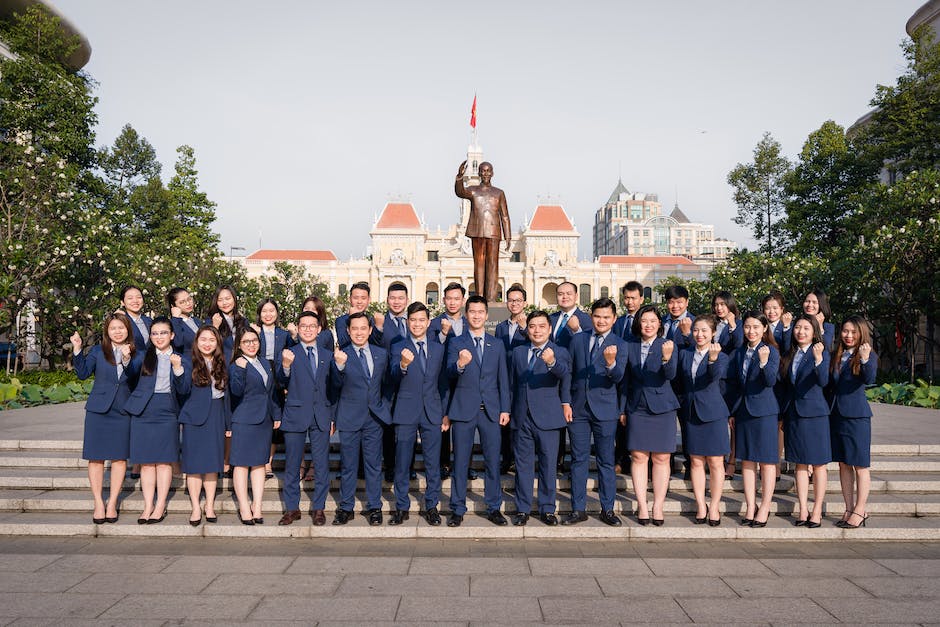Table of Contents
- Introduction
- Gandhi’s Nonviolent Resistance Movement: A Key Catalyst for India’s Independence
- The Salt March: Gandhi’s Symbolic Protest that Shook the British Empire
- Gandhi’s Philosophy of Satyagraha: The Power of Truth and Nonviolence
- Gandhi’s Influence on India’s Constitution: Shaping the Nation’s Democratic Values
- Q&A
- Conclusion
The Champion of Freedom: Mahatma Gandhi’s Role in India’s Independence
Introduction
Mahatma Gandhi, widely known as the Champion of Freedom, played a pivotal role in India’s struggle for independence from British colonial rule. His unwavering commitment to nonviolent resistance and his ability to mobilize the masses through civil disobedience campaigns made him a prominent leader in the fight for India’s freedom. Gandhi’s philosophy of Satyagraha, or truth-force, inspired millions of Indians to peacefully resist British oppression and demand self-rule. Through his leadership and tireless efforts, Gandhi became the symbol of India’s independence movement and his legacy continues to inspire generations around the world.
Gandhi’s Nonviolent Resistance Movement: A Key Catalyst for India’s Independence

Mahatma Gandhi, often referred to as the Father of the Nation, played a pivotal role in India’s struggle for independence from British rule. His nonviolent resistance movement, known as Satyagraha, became a key catalyst for India’s freedom. Through his unwavering commitment to nonviolence and civil disobedience, Gandhi inspired millions of Indians to rise up against the oppressive British regime.
Gandhi’s philosophy of nonviolence was deeply rooted in his belief in the inherent dignity and worth of every individual. He believed that violence only begets more violence and that true change could only be achieved through peaceful means. This philosophy became the cornerstone of his resistance movement and guided his actions throughout his life.
One of the most significant events in Gandhi’s nonviolent resistance movement was the Salt March, also known as the Dandi March, which took place in 1930. In an act of defiance against the British salt monopoly, Gandhi led a group of followers on a 240-mile march to the coastal town of Dandi, where they would produce salt from seawater. This act of civil disobedience not only challenged the unjust British laws but also united Indians from all walks of life in their fight for freedom.
The Salt March was a turning point in India’s struggle for independence. It garnered international attention and put pressure on the British government to address the demands of the Indian people. Gandhi’s nonviolent approach to resistance resonated with people around the world, and his message of peace and justice inspired countless others to join the fight for freedom.
Another significant aspect of Gandhi’s nonviolent resistance movement was his emphasis on self-reliance and self-sufficiency. He believed that true independence could only be achieved when Indians were able to meet their own needs and break free from the economic exploitation of the British. To this end, Gandhi promoted the use of khadi, or hand-spun cloth, as a symbol of self-reliance and as a means to boycott British goods.
Gandhi’s emphasis on self-reliance not only empowered the Indian people but also served as a powerful tool of resistance against the British. By encouraging Indians to produce their own goods and reject British imports, Gandhi struck at the heart of the British economic system in India. This economic boycott, coupled with the nonviolent protests and civil disobedience, put immense pressure on the British government and furthered the cause of Indian independence.
Gandhi’s nonviolent resistance movement was not without its challenges and setbacks. He faced numerous arrests, imprisonments, and even physical violence throughout his life. However, he remained steadfast in his commitment to nonviolence and continued to inspire others with his unwavering resolve.
In conclusion, Mahatma Gandhi’s nonviolent resistance movement played a crucial role in India’s struggle for independence. Through his philosophy of nonviolence, civil disobedience, and self-reliance, Gandhi inspired millions of Indians to rise up against the oppressive British regime. His actions and teachings continue to resonate today, reminding us of the power of peaceful resistance in the face of injustice. Gandhi’s legacy as the champion of freedom will forever be etched in the annals of Indian history.
The Salt March: Gandhi’s Symbolic Protest that Shook the British Empire
The Salt March: Gandhi’s Symbolic Protest that Shook the British Empire
In the annals of history, there are few events that capture the essence of a nation’s struggle for freedom as powerfully as the Salt March led by Mahatma Gandhi. This iconic protest, which took place in 1930, not only shook the foundations of the British Empire but also became a symbol of nonviolent resistance that inspired countless others around the world.
At the heart of the Salt March was the unjust British salt tax, which had burdened the Indian population for decades. Under this tax, Indians were prohibited from producing or selling salt, a basic necessity of life, without paying exorbitant fees to the British authorities. This blatant exploitation of the Indian people’s resources and their right to self-sufficiency became a rallying cry for Gandhi and his followers.
Gandhi, a staunch believer in nonviolent civil disobedience, saw the Salt March as an opportunity to galvanize the Indian masses and challenge the oppressive British rule. With a small group of dedicated followers, he embarked on a 240-mile journey from his ashram in Sabarmati to the coastal town of Dandi. The goal was simple yet profound: to produce salt from the seawater and defy the British monopoly.
As news of Gandhi’s march spread, thousands of Indians joined him along the way, swelling the ranks of the protesters and amplifying their message. The march itself was a testament to the power of unity and peaceful resistance, as men and women from all walks of life walked side by side, united in their determination to break free from the shackles of colonialism.
The British authorities, initially dismissive of the Salt March, soon realized the magnitude of the movement they were facing. They responded with force, arresting Gandhi and his followers, and attempting to suppress the protests. However, their heavy-handed tactics only served to further ignite the flames of resistance, as Indians across the country took to the streets in solidarity with their leader.
The Salt March, though seemingly a simple act of defiance, had far-reaching consequences. It not only exposed the inherent injustice of British rule but also demonstrated the power of nonviolent resistance as a means of achieving political change. Gandhi’s unwavering commitment to peaceful protest and his ability to mobilize the masses struck fear into the hearts of the British rulers, who were forced to confront the reality that their empire was built on the exploitation and subjugation of millions.
The impact of the Salt March reverberated far beyond the borders of India. It inspired similar movements of nonviolent resistance in other parts of the world, most notably the civil rights movement in the United States led by Martin Luther King Jr. Gandhi’s philosophy of satyagraha, or truth-force, became a guiding principle for those fighting for justice and equality.
Today, the Salt March stands as a testament to the power of one man’s conviction and the indomitable spirit of a nation. It serves as a reminder that true freedom is not won through violence and aggression but through peaceful resistance and unwavering determination. Mahatma Gandhi, the champion of freedom, forever etched his name in history through this symbolic protest that shook the British Empire and inspired generations to come.
Gandhi’s Philosophy of Satyagraha: The Power of Truth and Nonviolence
Mahatma Gandhi, the revered leader of the Indian independence movement, played a pivotal role in India’s struggle for freedom from British colonial rule. His philosophy of Satyagraha, which emphasized the power of truth and nonviolence, became the guiding principle for the Indian National Congress and inspired millions of Indians to join the fight for independence.
Gandhi’s philosophy of Satyagraha was deeply rooted in his belief in the inherent goodness of humanity. He believed that every individual possessed a divine spark within them, and it was this spark that could be ignited to bring about social and political change. Satyagraha, which translates to “truth force” or “soul force,” was Gandhi’s method of harnessing this inner power to challenge injustice and oppression.
At the core of Satyagraha was the principle of nonviolence. Gandhi firmly believed that violence only begets more violence and that true change could only be achieved through peaceful means. He advocated for passive resistance, urging his followers to refuse to cooperate with unjust laws and to peacefully protest against British rule. Through nonviolent acts of civil disobedience, such as boycotts, strikes, and peaceful marches, Gandhi sought to expose the moral bankruptcy of the British Empire and awaken the conscience of the world.
Gandhi’s philosophy of Satyagraha was not just a political strategy; it was a way of life. He believed that individuals had a moral duty to live in accordance with truth and nonviolence in all aspects of their lives. For Gandhi, Satyagraha was not just a means to an end but a way to transform society from within. He encouraged his followers to practice self-discipline, self-sacrifice, and self-restraint, as these were the qualities that would enable them to overcome their own weaknesses and contribute to the greater good.
One of the most significant examples of Gandhi’s use of Satyagraha was the Salt March of 1930. In protest against the British monopoly on salt production and the exorbitant salt tax, Gandhi led a group of followers on a 240-mile march to the coastal town of Dandi, where they would make their own salt from seawater. This act of civil disobedience not only challenged the unjust salt laws but also symbolized the larger struggle for independence. The Salt March captured the attention of the world and galvanized the Indian masses, leading to widespread protests and a renewed sense of unity among the Indian people.
Gandhi’s philosophy of Satyagraha had a profound impact on the Indian independence movement. It provided a moral and spiritual foundation for the struggle against British rule and inspired countless individuals to join the fight for freedom. Satyagraha became a powerful tool for mobilizing the masses and organizing peaceful resistance against the British Empire. Gandhi’s unwavering commitment to truth and nonviolence, even in the face of immense adversity, earned him the respect and admiration of people around the world.
In conclusion, Mahatma Gandhi’s philosophy of Satyagraha, with its emphasis on truth and nonviolence, played a crucial role in India’s struggle for independence. Through his unwavering commitment to these principles, Gandhi inspired millions of Indians to rise up against British colonial rule and paved the way for the birth of a free and independent India. His legacy as the champion of freedom continues to inspire generations to fight for justice and equality.
Gandhi’s Influence on India’s Constitution: Shaping the Nation’s Democratic Values
Mahatma Gandhi, the revered leader of the Indian independence movement, played a pivotal role in shaping India’s democratic values through his influence on the country’s constitution. Gandhi’s unwavering commitment to nonviolence, equality, and justice resonated deeply with the Indian people, and his principles became the foundation of India’s constitutional framework.
Gandhi firmly believed in the power of nonviolence as a means to achieve social and political change. He advocated for peaceful protests, civil disobedience, and passive resistance as effective tools to challenge British colonial rule. His philosophy of nonviolence, or ahimsa, became a guiding principle for the Indian National Congress and the freedom struggle as a whole.
Gandhi’s influence on India’s constitution can be seen in the inclusion of fundamental rights and freedoms. He championed the idea that every individual, regardless of their caste, religion, or gender, should be treated with dignity and respect. This belief is reflected in the constitution’s provisions for equality before the law, freedom of speech and expression, and the prohibition of discrimination on grounds of religion, race, caste, sex, or place of birth.
Furthermore, Gandhi’s emphasis on the empowerment of marginalized communities played a crucial role in shaping India’s constitutional provisions for social justice. He fought tirelessly for the rights of the untouchables, or Dalits, and advocated for their inclusion and upliftment in society. As a result, the constitution includes affirmative action measures, such as reservations in educational institutions and government jobs, to ensure the representation and advancement of historically disadvantaged groups.
Gandhi’s influence on India’s constitution also extended to the decentralization of power and the promotion of grassroots democracy. He believed in the importance of local self-governance and encouraged the establishment of village panchayats, or local councils, as a means to empower communities and ensure their active participation in decision-making processes. This vision of decentralized governance is reflected in the constitutional provisions for local self-government and the establishment of panchayats at the village, intermediate, and district levels.
Moreover, Gandhi’s advocacy for economic self-sufficiency and the upliftment of rural India influenced the constitutional provisions for agrarian reforms and rural development. He believed that the economic well-being of the nation depended on the prosperity of its rural population, and therefore, the constitution includes provisions for land redistribution, agricultural development, and the protection of farmers’ rights.
Gandhi’s role in shaping India’s democratic values cannot be overstated. His unwavering commitment to nonviolence, equality, and justice laid the foundation for a constitution that upholds the rights and freedoms of every individual. His emphasis on social justice, decentralization of power, and economic self-sufficiency continues to guide India’s democratic institutions and policies.
In conclusion, Mahatma Gandhi’s influence on India’s constitution is evident in its provisions for fundamental rights, social justice, decentralization of power, and economic self-sufficiency. His principles of nonviolence, equality, and justice continue to shape India’s democratic values and serve as a reminder of the champion of freedom who played a pivotal role in India’s independence. Gandhi’s legacy lives on in the constitutional framework of India, ensuring that his vision of a just and inclusive society endures.
Q&A
1. What was Mahatma Gandhi’s role in India’s independence?
Mahatma Gandhi played a crucial role in India’s independence movement as a leader and advocate for nonviolent resistance against British colonial rule.
2. How did Mahatma Gandhi promote nonviolent resistance?
Gandhi promoted nonviolent resistance through methods such as civil disobedience, peaceful protests, and fasting as a means of peaceful resistance against British oppression.
3. What were some key events during Gandhi’s involvement in India’s independence movement?
Some key events during Gandhi’s involvement in India’s independence movement include the Salt March, the Quit India Movement, and the negotiations for Indian independence with the British government.
4. What impact did Mahatma Gandhi have on India’s independence?
Mahatma Gandhi’s leadership and philosophy of nonviolence inspired millions of Indians to join the independence movement. His efforts ultimately led to India gaining independence from British rule in 1947.
Conclusion
In conclusion, Mahatma Gandhi played a significant role in India’s independence movement. Through his philosophy of nonviolent resistance and civil disobedience, he mobilized millions of Indians to peacefully protest against British colonial rule. Gandhi’s leadership and unwavering commitment to justice and equality inspired a nation and ultimately led to India’s independence in 1947. His legacy as the champion of freedom continues to resonate globally, serving as a symbol of peaceful resistance and the power of collective action.





